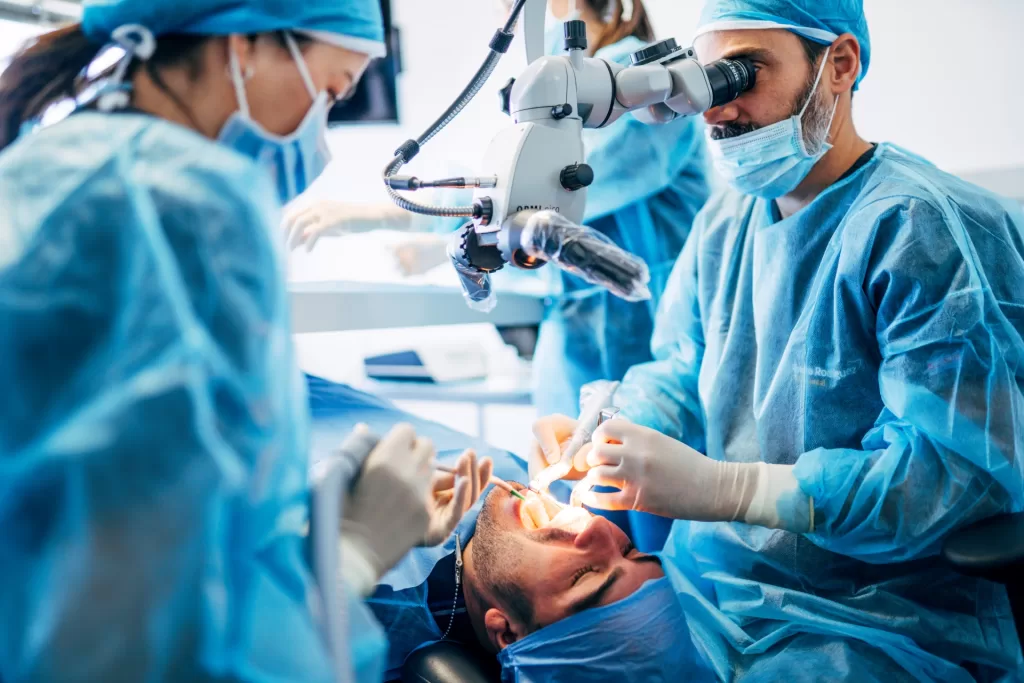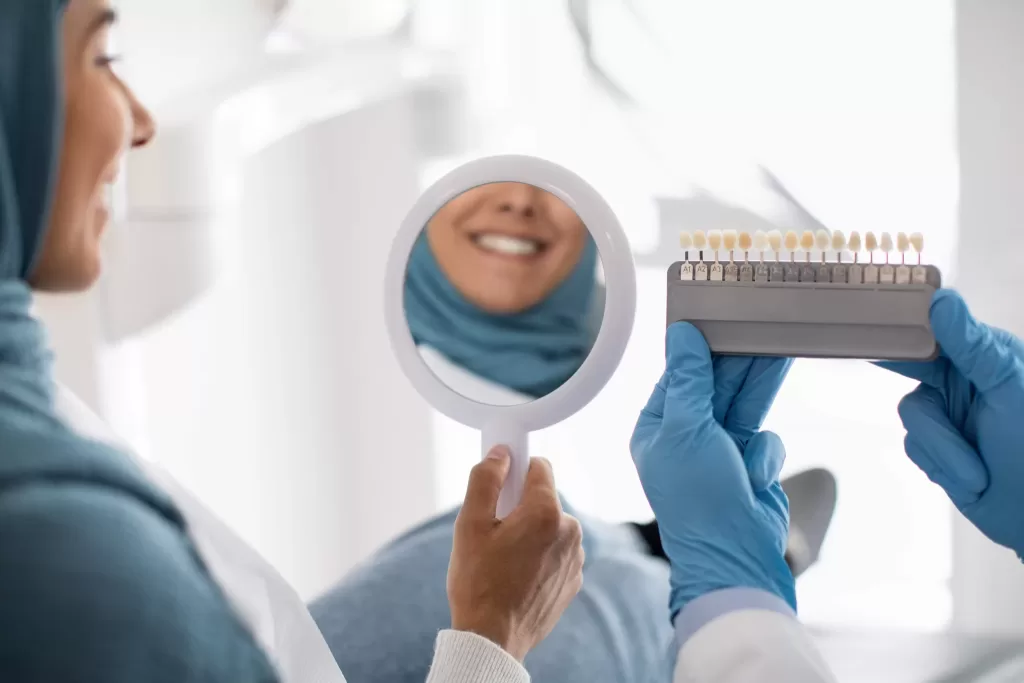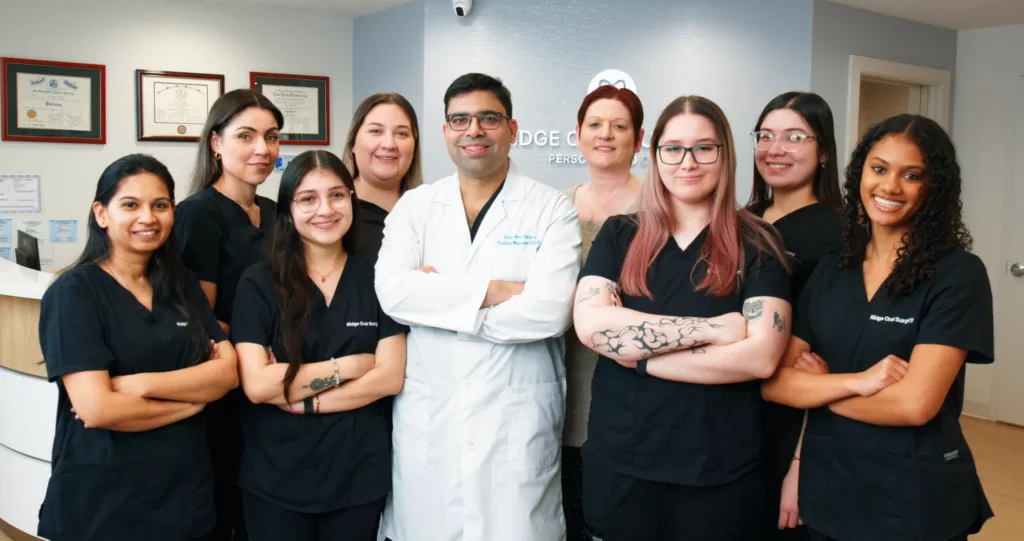Impacted teeth are more than just a nuisance; they play a crucial role in your long-term oral health. The “stuck” teeth are typically the upper eye teeth, and they play a key part in dictating your bite, lining up adjacent teeth, and other aesthetics. There are some misconceptions that many people have about impacted teeth, such as “only wisdom teeth can be impacted” and “it will just resolve itself”. If left untreated, the tooth will remain blocked and may lead to complications such as cysts, resorption, or infection.
This article will define impacted canines, discuss possible etiologies, and help the reader streamline their treatment options to help restore not only their smile but also their functionality and aesthetics.
What Are Impacted Canines?
An impacted canine is an eyetooth, located in the socket, either on the top or bottom, that has not erupted appropriately into its position in the dental arch. Canine teeth are not usually removed when impacted like wisdom teeth. Canine teeth are critical teeth for biting and chewing, as well as assisting in the eruption and alignment of other teeth. The maxillary canine is the second most common tooth to become impacted and usually erupts around age 13. Leaving it impacted under the gum tissue or bone can upset the harmony of the entire dental arch.
Impacted canines are atypical from other forms of dental pathology because of their special position in terms of oral function. These teeth have long roots and unique positions in the arch, which makes them exceptionally important for a balanced bite. Whereas almost all wisdom teeth impaction is resolved with surgical extraction, the goal regarding impacted canines is to save the tooth and gently guide it into position for the sake of long-term oral health.
Signs & Symptoms of an Impacted Canine Tooth
Early recognition of the warning signs of an impacted canine can help avoid serious complications. Common signs include:
- An ongoing pain or tenderness in the gums, particularly in the area of the upper front teeth.
- Swelling or redness in the affected area, indicative of inflammation or infection.
- Visible misalignment of the front teeth, due to the adjacent teeth shifting in the position of the missing canine.
- Delayed eruption of permanent teeth in teenagers is often discovered during routine orthodontic examinations.
If not treated, impacted canines can result in cysts, tooth root resorption of adjacent teeth, or chronic infections caused by bacteria that can accumulate around the impacted tooth. It is important to intervene early, and the American Association of Orthodontists recommends a panoramic X-ray around age 7 to assess for potential impaction.

What Causes Canine Teeth to Become Impacted?
Many of the factors contributing to this condition are developmental:
- Genetic Factors: If your family has had a history of dental crowding or a small jaw size, this greatly increases the risk of impaction.
- Overcrowding: If there is not enough space in the dental arch, there may not be room for the canine to erupt.
- Abnormal Tooth Angulation: If the canines are pointed towards the palate (roof of the mouth) or towards the cheek, they are much more likely to be trapped.
- Retained Primary Teeth: The baby teeth that do not fall out can stop the permanent canines from erupting.
While a lot of the causes of impaction cannot be helped due to unavoidable genetic factors, there are measures to ease issues through an early orthodontic consultation, which can be used to create space in the mouth or redirect the growth of other teeth.
How Are Impacted Canines Diagnosed?
Diagnosing orthodontic problems begins with a clinical examination to review tooth alignment and gum status. Next, dentists or oral surgeons will use sophisticated imaging technologies:
- Panoramic X-rays: Show a wider view of the positioning of the teeth and root development.
- Cone Beam CT (CBCT) Scan: Produces 3D images to accurately identify the tooth’s position and proximity to related structures and nerves.
Early diagnosis—ideally by age 10—allows a timeframe for less invasive treatments. For instance, orthodontic spacers may create space for the canine tooth to erupt naturally, rather than surgically.
Best Treatment Options for Impacted Canines
The treatment plan will depend on the tooth’s location, the age of the patient, and the depth of impaction:
Orthodontic Intervention
Braces or a palatal expander are used to gain space in either the dental arch or the area around the impaction to allow the tooth to erupt naturally. This approach is most effective when children and teens are still developing their jaws.
Surgical Exposure and Bonding
For teeth that have stuck under the gum tissue, an oral surgeon will initiate a simple procedure to expose the tooth and bond an orthodontic bracket to it, followed by the orthodontist attaching a gold chain to either the bracket and braces to slowly apply force on the chain over several months.
Extraction and Replacement
If the tooth is severely impacted or fused to the bone, extraction and a subsequent dental implant or bridge restoration may be necessary.
Post-procedure care includes a soft diet, over-the-counter pain relievers as needed, and orthodontic adjustments every two to four weeks.
Impacted Canine Tooth Surgery: What to Expect

The surgical procedure is simple and generally uses local anesthetic or IV sedation:
Incision and exposure: To gain access to the impacted tooth, the surgeon lifts the gum tissue; if a primary tooth obstructs the path, it is removed.
Bracket attachment: A small orthodontic bracket bonded to the tooth connects to a chain that is threaded through the gums and attached to braces.
Guided eruption: The orthodontist adjusts the tension of the chain over a period of 6–12 months to slowly guide the tooth into position.
The recovery process is minimal, with most patients returning to their regular activities after one day. Ice packs and ibuprofen typically alleviate swelling and discomfort.
Choosing the Right Oral Surgeon for Canine Impaction Treatment
Choosing an experienced oral surgeon will deliver superior results. Here are a few things to consider:
Board Certification: Ensure the surgeon has the proper credentials for jaw surgery, including specialized training and certification from a recognized dental or oral surgery board.
Collaborative Care: Oral surgeons should have the ability to collaborate with orthodontists to help ensure proper treatment.
Technology: Look for practices that can monitor progress with 3D/4D technology and offer minimally invasive surgeries when applicable.
At Ridge Oral Surgery, we use state-of-the-art technology with a personalized approach for every patient’s specific needs. We work with orthodontics in the case of jaw surgery, or for a smoother, functional, and aesthetic outcome.
FAQs About Impacted Canines
1. Can an impacted canine resolve on its own?
No. If left untreated, the tooth will continue to remain blocked without the risk of complications.
2. Does surgery hurt?
Most patients complain of slight discomfort, which is easily managed with over-the-counter medications.
3. What are the possible complications if left untreated?
If left untreated, impacted canines can lead to tooth decay, cyst formation, root resorption, and permanent damage to adjacent teeth.
Book a Consultation at Ridge Oral Surgery

Early intervention results in improved outcomes for affected canines. At Ridge Oral Surgery, New Jersey, we emphasize the use of minimally invasive techniques and work closely with orthodontic providers. Together, we can develop a personalized treatment plan that meets your needs and sets you up for long-term dental health and well-being.
Regardless of whether you are a parent hoping to figure out if your child needs early evaluation or an adult wanting to address an impacted canine that has been there for years, we are here to assist!
